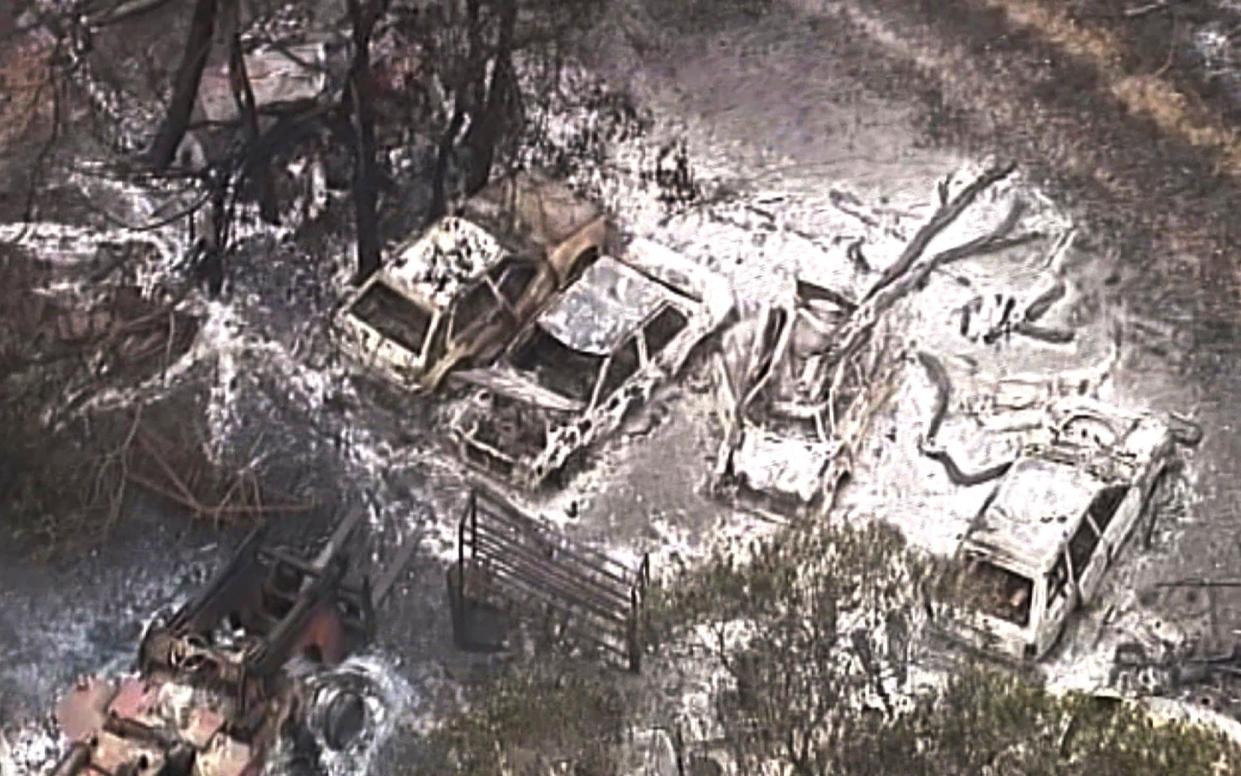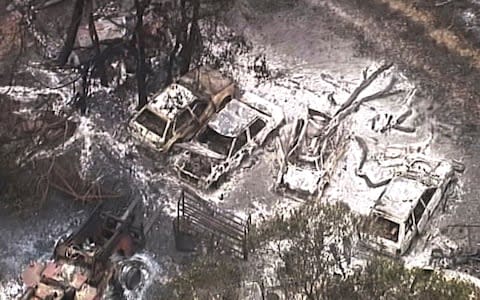Thousands flee 'catastrophic' bushfires in northern Australia as flash floods kill two in Sydney

Authorities ordered more than 10,000 people to flee from “catastrophic” wildfires moving across north-east Australia, as heavy rains in the south-east caused flooding that left at least two people dead.
In the state of Queensland, a heatwave and strong winds fuelled a massive fire that destroyed homes and led to the evacuation of all 8,000 residents from the town of Gracemere, the first time this has happened in its 150-year history.
The fire was threatening the larger town of Rockhampton, which is about five miles away and has about 80,000 residents.
The Bureau of Meteorology declared a catastrophic fire danger in the region, the first time such a level has been applied in Queensland.
"[This is] unprecedented, uncharted, but we have a plan,” said Annastacia Palaszczuk, the state’s premier.
"We expect to be in this heatwave at least until next Tuesday, so it is going to be very serious conditions from now until then.”
About 200 fires were burning across the state. Some started several days ago following a period of unseasonal dry and windy conditions. It was not clear last night whether there had been casualties.
More horrific vision coming in from Deepwater in Central Queensland. These fires are catastrophic. Truly scary. #QLDFires@abcbrisbanepic.twitter.com/y0el1Ounqw
— Allyson Horn (@allysonhorn) November 28, 2018
In some areas, police warned people who refused to evacuate their homes that they could “burn to death”.
“If you have children with you, you need to think really hard about not losing a house, but losing the people you care most about,” said the state’s Deputy Police Commissioner, Bob Gee.
“People will burn to death… It is no different to a Category 5 cyclone coming through your door.
Queensland Fire and Emergency Services said aerial tankers had released water on the blaze near Gracemere and helped to “suppress” it.
"However, that cannot operate through the night, and in some of those areas it's actually too dangerous to have crews in those areas," said Katarina Carroll, the head of the agency.
Fire �� Danger Ratings have reached Catastrophic for the first time in #Queensland due to the combination of a very dry, hot airmass and strong, gusty westerly winds, according to @BOM_aupic.twitter.com/RsK4cXB1aJ
— WMO | OMM (@WMO) November 28, 2018
“We have never ever in this state been in this situation before.”
Alison French, who left Gracemere with her two young children, said the fire was “horrendous”.
“You wouldn't want to be near it," she told ABC News.
"I don't know if we're going to have anything to go back to, but it seems to be getting worse."
Robert Griffith, a Macadamia nut grower who was planning to stay with several of his staff to try to battle a fire that was less than two miles from his property, said that “the wind is hot and dry, you can smell the fire, you can see the embers flying across”.
“Everyone is pretty tired but we’re a close-knit team, so everyone’s spirits are really high,” he told The Courier Mail.

As the fires continued, residents in Sydney, about 900 miles south, were cleaning up after a violent storm that caused flash flooding and turned roads into rivers. The city centre received a month’s worth of rain in two hours.
The storms caused the deaths of at least two people, including an emergency services worker and a 14-year-old killed in a car crash.
Flooding across the city led to traffic chaos and power outages that affected 8,000 people. More than 130 commercial flights were cancelled or delayed.
During the two hours of heaviest downpour, parts of the city received as much as six inches of rain.
"For that intensity and that duration, that’s the sort of rainfall you’d expect to occur about once every 100 years for that particular site," said Ann Farrell, from the Bureau of Meteorology.

